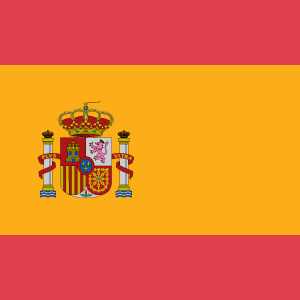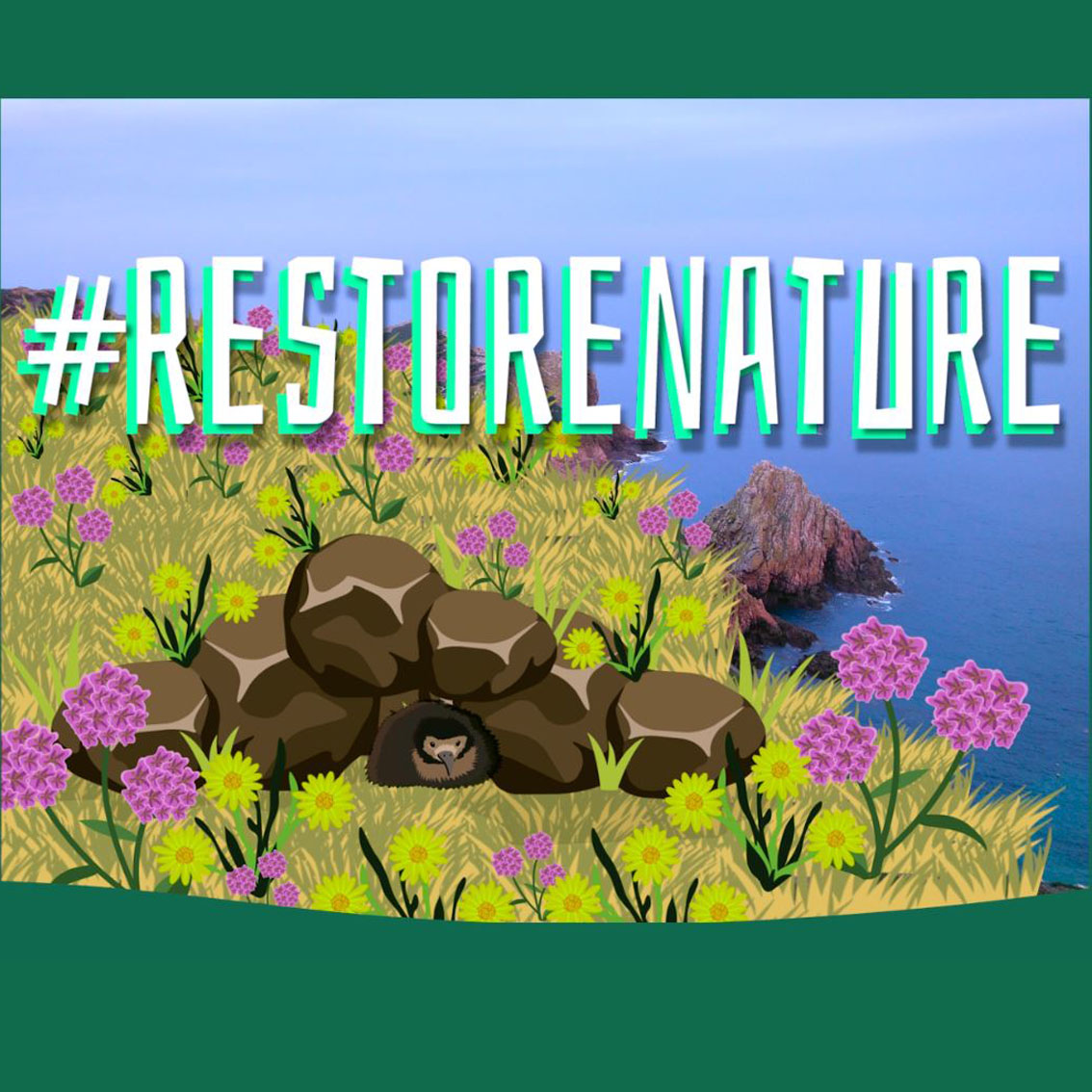Our response to the European Commission’s public consultation
2. In order to step up the restoration of degraded ecosystems, the EU should:
2.1. Set legally binding targets for the Member States to restore degraded ecosystems
- Fully agree
- Tend to agree
- Neither agree nor disagree
- Tend to disagree
- Totally disagree
- I don’t know / no opinion
2.2. Provide better guidance to help Member States develop restoration plans and strategies
- Fully agree
- Tend to agree
- Neither agree nor disagree
- Tend to disagree
- Totally disagree
- I don’t know / no opinion
2.3. Promote better use of existing EU funding opportunities for restoration
- Fully agree
- Tend to agree
- Neither agree nor disagree
- Tend to disagree
- Totally disagree
- I don’t know / no opinion
2.4. Promote the development of economic incentives and business opportunities related to ecosystem restoration and sustainable management
- Fully agree
- Tend to agree
- Neither agree nor disagree
- Tend to disagree
- Totally disagree
- I don’t know / no opinion
2.9. Other- please specify
Our submission:
EU must adopt a new law enabling landscape level restoration of high-quality nature leading in due time to biodiversity rich and functioning habitats.3. To what extent should the following criteria guide the setting of priorities for restoration?
| Ecological effectiveness: restoration will contribute to: | High priority | Moderate priority | Low priority | Not at all priority | No opinion/ I don't know |
| Improving the health of ecosystems, habitats or species of high biodiversity value | |||||
| Improving the connectivity of natural areas (ecological corridors including migration routes) | |||||
| Improving the resilience of ecosystems to climate change | |||||
| Benefits to society: restoration will contribute to the provision of the following ecosystem services: | |||||
| - climate change mitigation, including carbon sequestration | |||||
| - climate change adaptation | |||||
| - disaster risk reduction (such as protection from floods and storms) | |||||
| - water purification | |||||
| - water quantity regulation | |||||
| - air quality regulation | |||||
| - nutrient cycling | |||||
| - soil fertility | |||||
| - gene pool maintenance | |||||
| - pollination | |||||
| - pest and disease control | |||||
| - fish stock maintenance | |||||
| - human health and well-being benefits from interaction with nature | |||||
| - multi-functionality, i.e. the capacity of healthy ecosystems to deliver a wide range of ecosystem services | |||||
| - Other services | |||||
| Cost-effectiveness of the restoration measures | |||||
| Other criteria |
Please specify
Our submission:
The law must exclusively cover restoration of ecological functions and connectivity of habitats and promote natural ecosystem dynamics, with a main focus on ecosystems with significant carbon storage and adaptation potential.Please specify
Our submission:
Focus must be on fundamental land and sea use change that can put nature on a path towards sustaining ‘high quality’. Improvements of productive systems like agriculture, soil, commercial forestry or fishing should be tackled by other legislation.Our rationale:
The state of nature is extremely alarming. Legislation enabling the large-scale restoration of high-quality nature to bring back the ecological functions of habitats and their potential for climate adaptation and mitigation would be a real game-changer in Europe.For this purpose, we need a focused legislative tool that leads to transformative change in land and sea use and makes the restoration of biodiversity and carbon and biodiversity rich habitats such as wetlands (including coastal wetlands and floodplains), peatlands, grasslands, forests, rivers and marine ecosystems legally binding.
Based on what science tells us, the priority of this law should be to quickly bring nature back, restoring the natural processes of these habitats. and This would also come with enormous knock-on benefits by bringing back a wide range of ecosystem services and associated species such as pollinators.
• In the above table, we have followed this logic by identifying ‘nutrient cycling’, ‘soil fertility’, ‘gene pool maintenance’ and ‘pest and disease control’ as low-priority for the restoration law, as this should not be the direct focus for this specific tool (although the above will be indirect benefits).
In the Biodiversity Strategy, the EU promised to improve agriculture and forestry practices to make them more nature-friendly and this should indeed be the priority of other legislative instruments such the new CAP, the reviewed Sustainable Use (of pesticides) Directive, the Forest Strategy, new legislation on soil protection, etc.
• If we want the restoration law to be implementable, it should not be turned into a universal tool that tries to address all environmental issues together and provides a range of definitions on what is being considered to be ‘sustainable use’ . Instead, the law must focus on fundamental land and sea use change aiming at “giving back space to nature” at a landscape level. There are many more things that need to be done for nature and we are arguing for them in other policy debates. Through this consultation, we are also calling on the Commission to develop a tool that resets our relationship with nature. That is why the Commission should not focus on the “multi-functionality of ecosystems” as a priority (we picked “low priority”) as this risks muddling the message and would allow many sectors to claim that their economic activities contribute to the “multifunctionality”. The reality is that almost the entire land and sea area in Europe is heavily and unsustainably exploited by humans. This law should force a modest step back where we give back some “breathing space” to nature, also so that it can provide us with all the ecosystem services we depend on for our health and wellbeing.
• Moreover, the methodology currently used to assess ecosystem services at EU level is not yet ready to be used as the scientific basis for this law and would require long secondary processes that would create further implementation delays. The state of nature is such that we need rapid action now rather than the start of more protracted processes. The EU should further develop its work on ecosystem services and this can inform the implementation of the restoration law. But restoration targets should be based on clear land, river, and sea targets and concrete management change measures that are easy to understand, implement and enforce.
4. Restoration is the process of assisting the recovery of an ecosystem that has been degraded, damaged, or destroyed. Restoration targets may be set in a number of different ways. They can relate to incremental improvements of ecosystem condition or to reaching good condition; to a percentage of EU area or a specified extent of ecosystems on which restoration activities should take place. The restoration commitments of the EU Biodiversity Strategy for 2030 include such different approaches. In your view, should EU restoration targets be set as (multiple answers possible):
- A general EU level restoration target across all ecosystems
- Specific EU level targets per ecosystem or habitat
- Specific EU level targets per species or groups of species
- Other
Please specify
Our submission:
At least 15% of EU land and sea area and 15% of free-flowing rivers must be restored by 2030. The law should also include a target for CO2 removal by restored natural habitats acting as sinks, on top of 2030 emissions reduction target. The 15% target must apply equally to each Member State.5. Should any of the following ecosystem types be prioritised for restoration in the EU?
| High priority | Moderate priority | Low priority | Not at all priority | No opinion/ I don't know | |
| Urban ecosystems, such as urban green areas and brownfields | |||||
| Agroecosystems, such as grasslands, dehesas and montados, and landscape features (including on croplands) such as for example fallow land, buffer strips, hedges, terrace walls and ponds | |||||
| Forest ecosystems including natural, semi-natural forests and plantations | |||||
| Heathlands and shrublands | |||||
| Sparsely vegetated lands, such as rocky areas in mountains, beaches and dunes | |||||
| Inland wetlands, such as marshes, peatlands, wet grasslands, fluvial forests, riparian areas and floodplains | |||||
| Soil ecosystems (across urban, agricultural, forest and other terrestrial ecosystems) | |||||
| Freshwater ecosystems, such as rivers and lakes | |||||
| Marine ecosystems, such as coastal wetlands, nursery habitats, shallow biogenic constructions and deep water corals | |||||
| Other |
Please specify
Our submission:
Restoration definition must be narrow and not include improvement of agricultural soils/urban greening which should be addressed by other policies. It should focus on peatlands, wetlands, forests, grasslands, rivers, floodplains, marine ecosystems.Our rationale:
As mentioned above, we need a focused legislative tool that leads to transformative change in land and sea use and makes the restoration of carbon and biodiversity rich habitats such as wetlands (e.g. coastal wetlands), peatlands, grasslands, floodplains, forests, rivers and marine ecosystems into high-quality nature legally binding.In the above table, some of our responses may seem counterintuitive based on the way the questions are formulated but they have been well thought through. We need legislation that provides a game-changer for nature, but there is a real risk of ending with another green-washing tool that cannot be implemented in the next 10 years.
• “landscape features (including on croplands), such as for example fallow land, buffer strips, hedges, terrace walls and ponds” are essential to bring back farmland biodiversity but are really about good agro-ecology, not about restoring high quality nature, which is what we need in the restoration law. There is a risk that the bar will be set too low (how many extra trees on a farm tick the “restored” box?) and we see a real risk that including agroecological practices in this law would water down the concept of restoration, create loopholes for dodging targets and massively slow down implementation by requiring lengthy debates on definitions and metrics. Therefore, we have identified the “agroecosystems” section as low priority, in line with our previous responses (obviously they are a high priority for other policies such as the CAP and the reform of the pesticides legislation). Instead, we picked “no opinion/ I don’t know” as a default answer as the Commission included in this list “grasslands” which should certainly be a very high priority for this restoration law (including grasslands that will require active human management through grazing and mowing).
• We have selected “Sparsely vegetated lands, such as rocky areas in mountains, beaches and dunes” as ‘low priority’ as we want to avoid an easy way out whereby mountainous Member States can focus on ‘minimal’ restoration of unproductive mountain tops and rocky outcrops.
Moreover, to address climate change, restoration should be focused, to a large extent, on carbon-rich habitats. It must be noted that we do want to see restoration of important low carbon but ecologically significant habitats such as coastal sand dunes, but we believe this can be pursued through the landscape level restoration of coastal wetlands, grassland and river ecosystems, which we are calling for in the rest of the consultation as key priorities.
• We have designated “Soil ecosystems (across urban, agricultural, forest and other terrestrial ecosystems)” as ‘Not at all priority’ based on all above-mentioned arguments.
We acknowledge that the way the question was formulated is confusing as of course, soil is everywhere. By restoring any habitat, we are restoring soil for all terrestrial ecosystems.
We responded to this question assuming that the Commission is hinting at tackling of soil “on its own”, including measures for improving soil fertility for agriculture and forestry. This is very important but should not be the focus of this law which is about giving land back to nature (see explanation above). Instead, there should be a new EU legal framework on soil. The importance of soil for biodiversity and climate warrants separate legislation for the protection of soil.
6. How important do you consider the following factors and measures for ensuring that future EU restoration targets are delivered?
6.1. Specify how EU targets should be broken down into national contributions, taking into account national characteristics
- Very important
- Somewhat important
- Not at all important
- I don’t know / no opinion
Our rationale:
All Member States should equally contribute to achieving the legally binding restoration targets of the new restoration law. We need a restoration push all around Europe. What needs to be restored and the starting points will change, e.g. natural old growth forest restoration might need to start with planting where forest is completely gone, or could be achieved much more easily by stopping harmful activities in an already mature biodiversity-rich forest. But we think there are ecological, political and ethical reasons not to try and “farm out” restoration efforts on less prosperous Member States or those with currently better ecological conditions.6.2. Require Member States to establish national restoration plans
- Very important
- Somewhat important
- Not at all important
- I don’t know / no opinion
6.4. Put in place a mechanism for regular reporting on progress in meeting the targets
- Very important
- Somewhat important
- Not at all important
- I don’t know / no opinion
6.6. Other - please specify
Our submission:
We need detailed science-based national restoration plans, to be assessed and approved by the Commission, to ensure their quality and consistency.7. What measures are needed to ensure that restored ecosystems are kept in good condition in the long term?
7.2. Establish long-term monitoring and reporting on the condition of restored ecosystems
- Very important
- Somewhat important
- Not at all important
- I don’t know / no opinion
7.3. Designate certain restored ecosystems as protected areas
- Very important
- Somewhat important
- Not at all important
- I don’t know / no opinion
7.4. Other - please specify
Our submission:
The law should encompass active (eg dam removal) and passive (eg fishing bans, logging bans) restoration. These restoration activities can be undertaken inside or outside protected areas, in which case Member States should guarantee the long-term protection and improvement of the restored habitats.8. Is there anything else you would like to add?
Our submission:
National restoration plans need to show how restoration measures will support:Improved connectivity of Natura 2000; achieving target of 10% of EU’s land and sea area to be strictly protected; climate change adaptation and mitigation (in particular through water retention to help deal with increasing floods, droughts and sea level rise); objectives of existing legislations (e.g. BHD, WFD, MSFD) while being additional to existing legal requirements; Public participation.
The law must contain clear deadlines for the restoration plans and restoration measures, for the approval of the plans by the Commission and for the involvement of interested stakeholders and scientific experts. Monitoring of restoration measures, biodiversity outcomes and progress to targets, through standardized, and frequent national reports will be key.
The new law should support the use of existing EU funds and the creation of a dedicated EU restoration fund (or facility within some other fund in the future MFF).
Thank you
Thank you for joining us in our goal to #RestoreNature! As a final step you can help spread the word - Ask your friends to help #RestoreNature!
104,188 ×
Thank you · Danke · Gracias · Merci · Köszönjük · Grazie · Bedankt








Our rationale:
In relations to the above-mentioned questions, we absolutely agree that guidance for Member States from the Commission, the promotion of better use of existing EU funding opportunities and the development of economic incentives and business opportunities are very important to support legislation on restoration. However, we have consciously responded that we “Neither agree nor disagree” as we do not agree that providing better guidance and promoting funding opportunities can or should replace the need for legally binding targets.The EU must adopt new law setting legally binding targets as a priority, and not replace it with providing guidance and incentives:
• Many EU tools only provide non-binding guidance to Member States which often result in inaction. The previous Biodiversity Strategy included a voluntary target for ecosystem restoration, which did not result in action on the ground. We have no more time to lose and need a new law to make nature restoration legally binding for all Member States.
• Similarly, the use of existing funding would of course be helpful but should not prevent the urgent adoption of a restoration law. Existing tools are not enough. The creation of a new fund dedicated to restoration would also be needed.
• Finally, economic incentives and business opportunities are welcome, but through this consultation, we are asking the Commission to remain focused on adopting a new legally binding instrument that makes nature restoration an obligation for Member States. Experience has shown that incentives alone are not enough to trigger actual change and indeed that Member States rarely deploy proper incentives in the absence of binding EU obligations.
• Finally, it is crucial that the restoration targets are additional to existing obligations in e.g. the Birds and Habitats Directives, the Water Framework Directive or the Marine Strategy Framework Directive. The implementation and enforcement of existing obligation must also be urgently be improved.